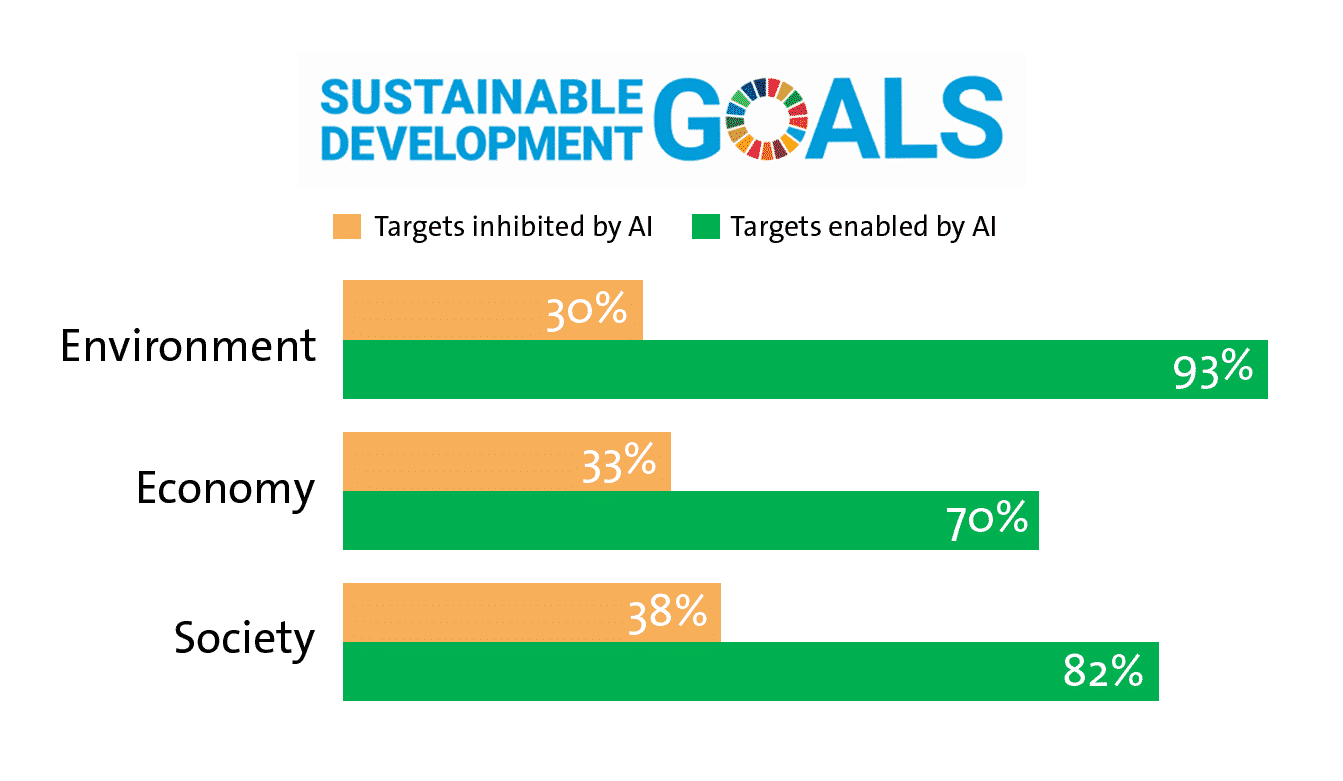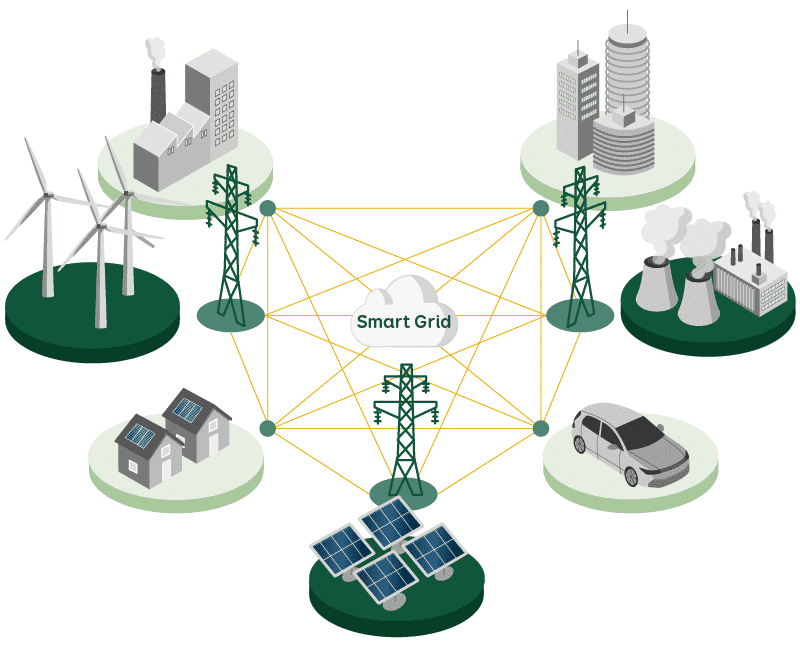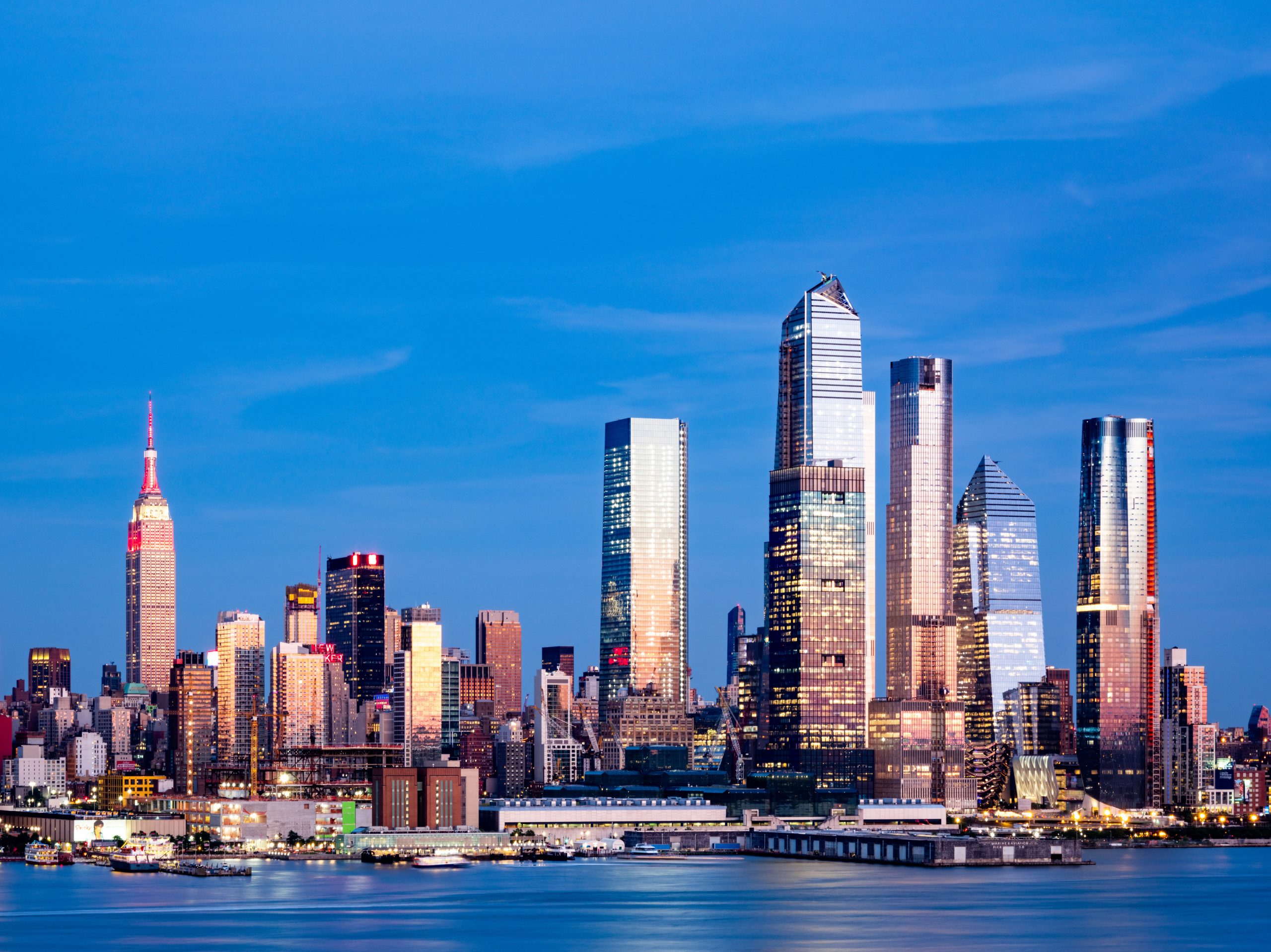First things first – Numbers and artificial intelligence in sustainability
The UN defined 17 Sustainable Goals in total. The graphic represents in total three different categories which are: Social, Economy, and Environment. According to “Nature Communications“, AI can enable a lot of parts in the Sustainable Goals (see image below). The orange markings mean that they inhibit the goal and green enables it. AI can help to detect extreme weather conditions, develop greener transportation, or monitor deforestation. Furthermore, we can develop better grid systems to ensure renewable energy. Other technology can help with recycling produced waste much faster.

Opportunities of implementing artificial intelligence in reaching sustainability
Big companies like Google or Microsoft are already implementing artificial intelligence to make their services more sustainable. For example, Google created an AI that teaches itself to minimize the energy it needs to cool the data centers – this reduces the energy used for this by 35%. Powering big serves can take a toll on our environment as it needs a lot of energy to cool the technology. More and more people are using the digital space, so it is a step in the right direction to shift the way things are being handled. Next, we will go a bit deeper into how artificial intelligence can influence certain sectors and reduce the carbon footprint.
Energy
Energy places an important role when it comes to sustainability. The last year took a toll on all of us and we mostly had to work from home. Naturally, we spent more energy. New AI technology can help better grid systems to enable renewable energy. In the age of digitalization and decentralization, it becomes increasingly hard to manage all the “participants” in the grid and keep it balanced. Smart grids can not only transport electricity but also data. This data helps to react to the increased consumption of energy. With the help of artificial intelligence, the behavior can be analyzed and the system can react accordingly.
But also if someone is producing energy themselves, it can also be distributed to other intersections in the grid. Basically, the smart grid coordinates energy generation and energy consumption. Ever heard about the term “prosumer”? It summarizes the producer and consumer in one word. That is also what happens in the smart grid. But it does not end with Smart Grids. AI can also help to forecast capacity levels. With the help of sensors, solar and wind generations can provide a lot of real-time data. It can depict wind speed or global horizontal irradiance.

Recycling
Another important part of a sustainable future is recycling. Waste is only increasing: Globally 2.01 billion tonnes of municipal solid waste are annually produced. To recycle such a huge amount of waste is not an easy task – maybe even impossible for humans. Artificial intelligence or more robotic sorting is the answer here. With the help of advanced cameras and technology, waste is sorted accordingly. Furthermore, this way of sorting can help to protect the worker’s health. In our last article, we already talked about how artificial intelligence can take over work for humans. They help in repetitive tasks and also decrease the chance of workers getting hurt.
These robots can determine which color or shape certain taste has and put them into the respective bins. Due to the sorting, the robots will also gather data and learn which materials come on which day. This does not only help in protecting our environments, but also companies can benefit from such a technology. It increases the recycling process and reduces energy consumption.
Wastewater
Water is a crucial resource on our planet. Naturally, we want to save it to continue living. To not waste too much on this precious liquid, we use wastewater treatment plants. If wastewater accidentally discharged, it would seriously harm the environment: On fishes, wildlife habitats, and even our own health. Artificial intelligence can be used to prevent such a thing from happening. By controlling a daily flow and gathering data, artificial intelligence can detect, when something is off.
It can find weird sensor behavior and warn the operators. But they can also monitor the energy consumption and act accordingly. Next to that, artificial intelligence can also test the quality of the effluent. This helps to optimize the process and follow the effluent regulations in real-time. Basically, the AI can tell the operator what is going on and provides them to identify patterns and trends – the samples don’t need to be sent to a lab anymore.
Risks of implementing artificial intelligence in reaching sustainability
This sounds too good to be true right? Artificial intelligence can help in many ways, but as always, there is a dark side. Artificial intelligence is practical but also very expensive. Implementing it into the mission of saving our planet is very useful, but someone has to pay for it. In a utopian world, every wastewater treatment plant or every city uses Smart Grids, but that is easier said than done. It needs a good strategy, experts and obviously the right equipment. The technology also needs regular maintenance to reduce security risks, so the costs are only increasing.
Another problem is energy itself. Powering such technology can become quite energy-loaded and in the end, might do more harm than good. According to the MIT Technology Review, training a single AI model can emit as much carbon as five cars in their lifetime. Artificial intelligence still needs a new strategy on its own. There needs to be a way to distribute it in an eco-friendly way and then it can really help out. Of course, if a company has the resources to power such technology, why not go for it? Do you have an idea of how it is easier and more efficient to distribute artificial intelligence to help our environment? Join our working group and share your ideas with others!
Join our Strategy Groups!
You want to discuss more about this topic? Join our Strategy Group on Cyber Security and continue the discussion on wethink.eu! Click the button below to register and to join our groups. If you are not sure how to do that, check out our FAQ page or contact us at info@wethink.eu.
Sources
https://earth.org/data_visualization/ai-can-it-help-achieve-environmental-sustainable/
https://www.nature.com/articles/s41467-019-14108-y
https://www.forbes.com/sites/glenngow/2020/08/21/environmental-sustainability-and-ai/?sh=5f5782297db3
https://www.ey.com/en_gl/power-utilities/why-artificial-intelligence-is-a-game-changer-for-renewable-energy
https://www.next-kraftwerke.com/knowledge/artificial-intelligence
https://opseyes.com/5-ways-artificial-intelligence-ai-can-protect-you-your-wastewater-and-your-treatment-plant/





